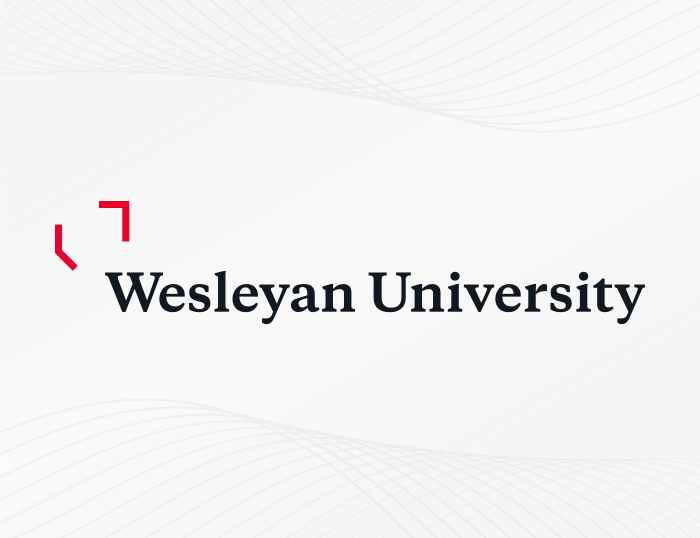Case Study
A textbook case of improving asset data management for this Connecticut university

At a glance
For years, Wesleyan University had relied on old-fashioned manual processes to manage its IT infrastructure. Seeking to address the enormous waste of time and resources, the university turned to Flexera and its integrated solutions to reduce time spent researching and validating IT asset data. Flexera’s solutions quickly delivered dividends for software and hardware asset management. Researching and inputting a new hardware model to the service catalog had once taken up to an hour; the task now takes less than ten minutes. And preparing asset inventory reports has been reduced from 45 minutes to less than two minutes.
The challenge
A slow, manual process for identifying assets taxed the university’s small IT service
Wesleyan University is a private liberal arts college located in Middletown, Connecticut. The university’s IT staff had adopted solutions from Flexera partner ServiceNow® to digitize its hardware and software procurement process, as well as build an internal catalog of approved assets to make the IT ordering process easier for the 3,200 students and 1,000 faculty and staff on campus.
But when the process was implemented, the development of the internal catalog quickly became bogged down by the need to manually obtain and record each asset’s specific model details to ensure it was properly catalogued. IT technicians often used search engines to find these details, wading through dozens of nearly identical products before finding the correct one. This inefficient process often required a full hour of research to locate the information for a single asset.
Normalize
Normalize
Deputy chief information officer Karen Warren knew it would be difficult to stay current with this process, particularly with the campus’s small IT service.
“There was a lot of repetitive, manual labor involved in looking up the details of the new device, finding the correct model number, and recording all of the relevant information in a uniform format,” Warren recounted. “It sounds trivial, but the process required a significant investment of our time and diverted my group away from accomplishing more critical priorities.”
It was time to find a better way.
The Solution
Solutions from Flexera solved both hardware and software management issues
Warren was introduced to the Normalize solution, a feature of Flexera’s Data Platform, while attending ServiceNow’s annual Knowledge conference. She learned how the solution could potentially address Wesleyan’s hardware catalog challenges. Normalize aggregates, de-duplicates and cleans data from existing data sources of enterprise IT assets. It does this by leveraging more than 60 million deterministic mappings to align data to the powerful Technopedia, a feature of Data Platform, to create consistent hardware and software data to drive ITAM processes. Normalize works in conjunction with Technopedia, the most trusted and comprehensive hardware and software asset information repository.
The data provided by the Flexera solutions serves as the foundation for a wide range of initiatives, including vendor contract management, license management, IT finance management and vendor audits.
After digging a bit deeper, Warren realized that Normalize would not only automate and input each hardware product’s correct data, but could also be applied to the university’s software—assets that contain far more data than hardware. Warren recognized that Technopedia and Normalize “would solve several of these pressing challenges for us and automate the process going forward.”
When finalizing the decision to purchase Normalize, Warren considered both the cost of the time spent in trying fix the problem manually and the intangible impacts the pain point was having on her department. The Flexera team worked closely with Wesleyan to understand the issues the school needed to address, and how some of its unique characteristics had to be incorporated in the ultimate solution. The university decided to implement the solution after seeing several demonstrations that successfully applied Normalize to Wesleyan’s data.
Normalize
Normalize
(With our old process,) there was a lot of repetitive, manual labor involved in looking up the details of the new device, finding the correct model number, and recording all of the relevant information in a uniform format.
The Results
Flexera’s solution cut asset management time by 80% for the university
Wesleyan’s Normalize solution has been integrated into its ServiceNow workflow, to the great delight of the IT team. Where it had once taken up to an hour to input a new hardware model to the service catalog asset, it now takes less than ten minutes.
In addition to delivering quantifiable cost savings, Normalize has contributed the unquantifiable benefit of guaranteed data accuracy. Model numbers are no longer accidentally inputted incorrectly. Warren and her team can now scan and inventory their hardware and software in a standardized format, and present that information in a much more timely and accurate way than had ever been possible before implementing Normalize.
The department also can use Normalize to run reports in less than two minutes. Previously, the team had to compile data from various sources using a time-intensive process Warren likened to putting together a puzzle.
Data Platform users spend 75% less effort managing external audits* . 60% less time Researching & validating data* *According to a 2019 study by third-party
research firm Hobson & Company
Warren compared the implementation of Normalize to electricity: It blends almost invisibly into the background to enable other processes when it’s running normally, but any issues are noticed immediately.
“That’s exactly what I need the product to do,” Warren said. “I shouldn’t be interfacing with it on a regular basis. If I had to interface with it frequently, we might as well have gone back to our original process of having a staff person input the data, because we would be losing that time anyway.”
